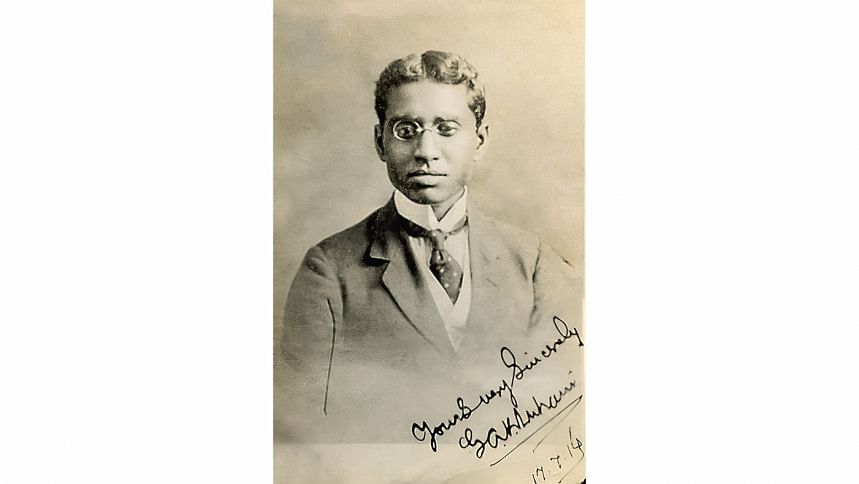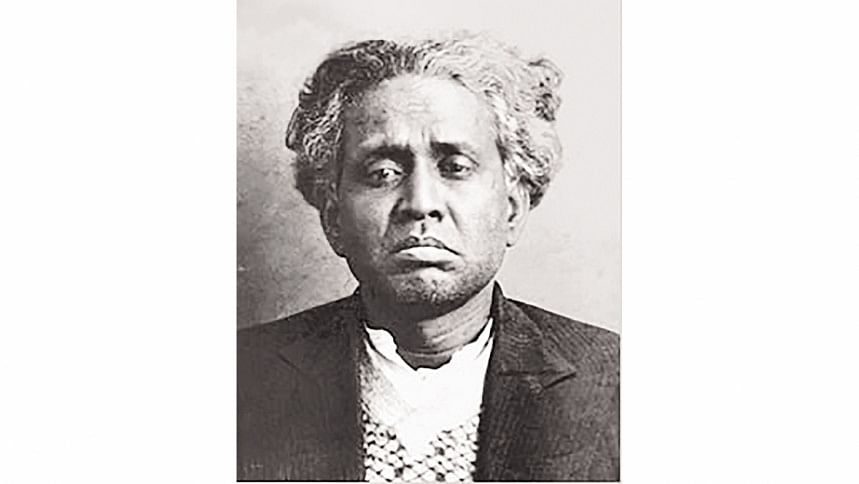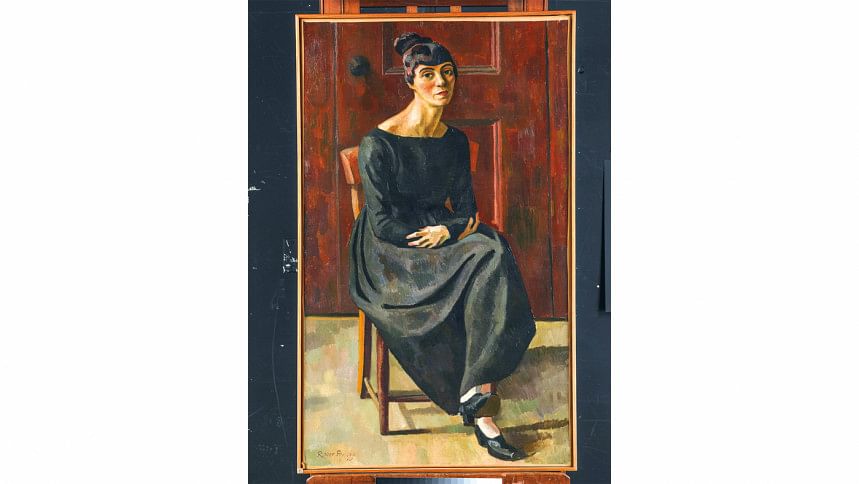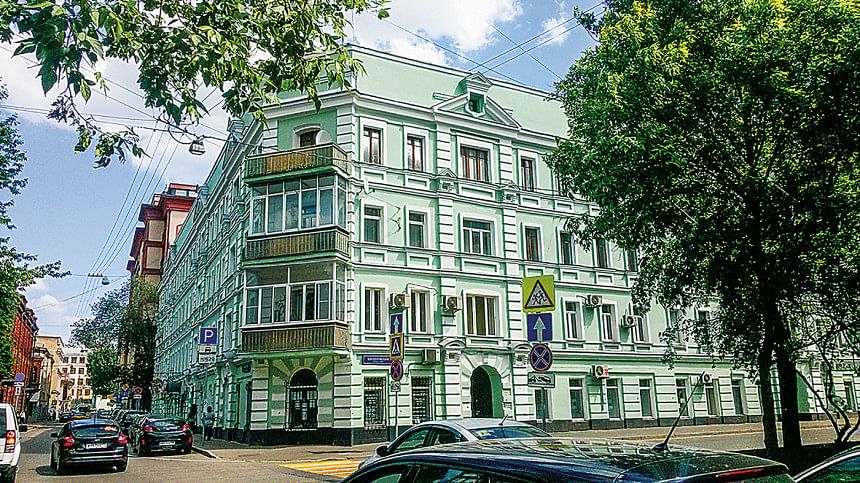The Forgotten Revolutionary

All the colonies around the world had to pay the highest price for liberating themselves from the shackles of colonisation. However, not all colonies fared the same as India. Revolutionary activities for India's independence movement took place on a vast canvas that extended across many parts of the world.
We usually discuss the sacrifices of anti-British revolutionaries who were active within the Indian subcontinent. However, there were also individuals who made immense sacrifices abroad, engaging in a myriad of activities to liberate India from the yoke of British rule. Narratives of their sacrifices are seldom explored in academic discourse or popular literature such as prose, poetry, or novels in Bangladesh.
On 17 September 1938, Ghulam Ambia Khan Luhani was executed by firing squad at Kommunarka, near Moscow, on Stalin's orders. However, in 1957, the Military Collegium of the Soviet Supreme Court declared his trial a miscarriage of justice and posthumously exonerated him.
Nevertheless, there exists a grand and glorified tale of these heroes that deserves to be told not only to the people of the Indian subcontinent but also to the world—one that will surely inspire future generations. Imagine a revolutionary swimming off the coast of Singapore to escape the police and reaching the islands of Sumatra in Indonesia with the help of fishing boats. Consider another who crossed the Suez Canal in Egypt to evade the surveillance of British agents. These are just a few examples of how revolutionaries outside India became unstoppable in their quest to free their motherland.
Subhas Chandra Bose is renowned for his revolutionary activities abroad. However, long before him, a group of individuals were engaged in diverse efforts across Europe to accelerate India's freedom movement. Initially, they sought assistance from Germany and later from the erstwhile Soviet Union. One such hero was Ghulam Ambia Khan Luhani, who hailed from Sirajganj, Bangladesh. He was not alone—two other Bengali revolutionaries met the same fate in Moscow: Virendranath Chattopadhyaya from the then Bikrampur (now Munshiganj) and Abani Mukherji from Satkhira.

The Journey of a Book
The recently published book Ghulam Ambia Khan Luhani: Ek Ojana Biplobir Kahini (Ghulam Ambia Khan Luhani: The Narrative of an Unknown Revolutionary) offers insight into the colourful life and multifaceted activities of revolutionary Luhani. In the introduction, the book's author, Matiur Rahman—editor of Prothom Alo—narrates his 42-year quest to uncover Luhani's life and work.
Rahman first heard about Luhani in 1981 in Delhi from Dr Gangadhar Adhikari, a scientist and communist leader. Dr Adhikari had come across Luhani's diverse activities while documenting the history of the Communist Party of India in several volumes. He was also known for his arrest in the Meerut Conspiracy Case of 1929, which led to a notable protest—none other than Albert Einstein himself wrote to the British government, demanding his release. Dr Adhikari had previously worked at Einstein's research institute in Berlin in the 1920s.
Since 1981, Matiur Rahman has been on a relentless quest to gather information about Luhani. He searched archives across Berlin, Moscow, Delhi, and Kolkata. While he may not have uncovered everything, he managed to collect an unprecedented volume of material on this forgotten revolutionary. In the book, Rahman not only captures Luhani's multi-dimensional work but also sheds light on various aspects of his family life. He includes letters written by Luhani from Paris to his mother in Sirajganj, correspondence from Luhani's wife Gabrielle to his mother, and exchanges between Luhani's family members and a British officer, as well as a shipping agency in Kolkata, in their attempt to bring him back home.

The depth of Rahman's dedication to this book is evident from an incident in the mid-1980s when he met Russian historian and India expert Leonid Mitrokhin in Moscow. In 1991, Mitrokhin published an article in Soviet Land magazine, printed in Delhi, where he was the first to reveal the tragic fates of the three Bengali revolutionaries—Virendranath Chattopadhyaya, Abani Mukherji, and Ghulam Ambia Khan Luhani—all of whom had roots in present-day Bangladesh. At the end of the article, Mitrokhin expressed hope that Matiur Rahman was planning to write a book on Luhani, believing it could offer new insights into the life and work of this revolutionary. Decades later, in October 2024, this long-awaited book finally came to light.
The book reveals that after passing his Entrance Examination (equivalent to today's secondary school exam), Luhani studied at Aligarh University in India before enrolling at the London School of Economics and Political Science in 1914. He was the maternal uncle of prominent Bangladeshi media and film personalities Fateh Lohani and Fazle Lohani, as well as their sister, the distinguished singer and professor Husna Banu Khanam. Through Fazle Lohani, Matiur Rahman was able to connect with Ghulam Ambia Khan Luhani's nephew, Major General (retd.) Helal Morshed, who had preserved the family's letters for many years.

Just as the book was nearing publication, in May 2024, Julia Boddewyn, an art researcher from New York, contacted Matiur Rahman to inquire about Luhani's wife, Gabrielle Soene. This communication revealed that Gabrielle was a model and fashion designer. The famous Italian artist Amedeo Modigliani had made several drawings of her. Additionally, she had modelled for Roger Fry's paintings, Jacob Epstein's sculptures, and Edward Wolfe's portraits. A key document included in the book, sourced from the England and Wales Marriage Registration Index (which records marriages from 1837 to 2005), provides official evidence of Luhani and Gabrielle's marriage ceremony, which took place in Pancras, London, in 1919.
Tracing Ghulam Ambia Khan Luhani
Various documents from Matiur Rahman's collection reveal that Luhani was engaged in the labour movement and supported the Soviet Revolution in London without being affiliated with any particular political group. He worked as a journalist and teacher for his livelihood. From 1920 to 1925, he lived in France, Germany, and Switzerland, writing for newspapers in those countries on India's political and labour movements. Besides English, he was proficient in French, Persian, German, and Hindi.
Luhani first visited Moscow in 1921 as part of an expatriate Indian revolutionary group led by Virendranath Chattopadhyaya. Although the group returned after failing to secure support from the Comintern, Luhani stayed behind for a while and worked in its publicity department, known as Agitprop. While in Paris, he served as editor of The Masses of India, the official publication of the Indian Communist Party. He was also involved in an organisation that promoted India's freedom movement. This organisation, named Committee Pro-Hindu [where 'Hindu' denoted 'Indian'], was founded by the French writer, journalist, and political activist Henri Barbusse, whose works profoundly influenced the Lost Generation writers, including Ernest Hemingway and Erich Maria Remarque.

During his time in Paris, Luhani was accused of anti-British imperial activities and denied permission to remain in the country. In October 1925, he relocated permanently to Moscow. He joined the Communist Party of the Soviet Union in 1928 and became a Soviet citizen in 1933. During this period, he undertook various roles within the Communist International (Comintern), the global centre of the communist movement.
This book on Luhani vividly portrays his flamboyant life. He worked as a journalist, translator, researcher, and teacher in various organisations, including the Comintern. He was involved with Peasant's International and MOPR (the international organisation for aiding revolutionaries). Additionally, he worked in the Russian Soviet Federative Socialist Republic, Narimanov Institute, Institute of Oriental Studies, and the Communist University of the Toilers of the East. He also lectured at the University of Moscow on Indian affairs.
Luhani represented India at the Sixth Comintern Congress in Moscow, where he openly expressed his differences with M.N. Roy. On 30 August 1964, Link's Moscow correspondent, P. Unnikrishnan, wrote an article stating that Luhani served as a consultant to the Comintern on national and colonial issues. Through this book, Matiur Rahman reconstructs Luhani's extraordinary life and multifaceted contributions, using documents he has meticulously collected over the past 42 years with great passion and dedication.
Beyond Luhani, this book also explores the activities and initiatives of Indian revolutionaries based in Berlin and Moscow. In 1921, Luhani, along with Virendranath Chattopadhyaya and Pandurang Khankhoje, co-authored a thesis titled India and the World Revolution and sent it to Vladimir Lenin, leader of the Russian Revolution. Remarkably, they received a response from Lenin. Notably, Virendranath Chattopadhyaya was the younger brother of renowned political activist and poet Sarojini Naidu, also known as the Nightingale of the East.
Luhani's intellectual and analytical prowess is evident in his articles and reports included in this book. The eminent revolutionaries M.N. Roy and Saumyendranath Tagore praised his sharp intellect and theoretical insight. Saumyendranath was the grandson of Dwijendranath Tagore, the elder brother of Rabindranath Tagore, and the son of Sudhindranath Tagore.
Posthumous Redemption
Soviet intelligence documents used in this book reveal that suspicion and distrust surrounded Luhani during Stalin's era, a period when many were executed for alleged dissent. Luhani was not spared from this tragic fate. On 17 September 1938, he was executed by firing squad at Kommunarka, near Moscow, on Stalin's orders. However, in 1957, the Military Collegium of the Soviet Supreme Court declared his trial a miscarriage of justice and posthumously exonerated him.
The same fate befell Virendranath Chattopadhyaya and Abani Mukherji. Virendranath, widely known as Chatto, was a prominent revolutionary and early internationalist who worked abroad for India's struggle against British imperialism. He was also closely associated with Jawaharlal Nehru. Chatto spent most of his life in Europe, leading the Berlin-based revolutionary group, where Luhani and Abani were also active. In his later years, he worked as a social scientist and university lecturer in the Soviet Union. Like Luhani, he was executed during Stalin's purges in 1937 and was posthumously rehabilitated with honour in 1956.
Abani Mukherji, another significant revolutionary, was associated with the Berlin group and had been living in the Soviet Union since 1920. He famously escaped from a Singapore prison by swimming and using fishing boats to reach Kolkata via the Indonesian islands while returning from Japan to rally support for India's independence. He later became a professor at the University of Moscow but was executed in 1937 during Stalin's purges. He, too, was posthumously rehabilitated in 1957.
This book includes numerous letters and documents related to Luhani, including the thesis India and the World Revolution, along with various articles and reports written by him. The second and third chapters focus on these writings. The final chapter features an article by Dr. Binayak Sen, Director General of BIDS, analysing the ideological backgrounds of the revolutionaries of that period. Additionally, the book includes Leonid Mitrokhin's article A Triple Trap, which discusses Luhani, Virendranath, and Abani, as well as a conversation between Matiur Rahman and Dr. Shobhanlal Dutt Gupta, a Comintern expert and professor at the University of Kolkata. This discussion sheds light on various topics, including the revolutionaries of that era, the Comintern, and the future of socialism.
The book is further enriched with rare colour photographs of Luhani, drawings and portraits of Gabrielle, images of their residences in different cities, and significant letters.
Reading this book provides insights into the tragic fate of a Bengali revolutionary and transports us to a historical period that continues to influence various layers of our politics and society. It reveals the extraordinary, adventurous lives of these revolutionaries and the profound sacrifices they made. Moreover, it highlights many crucial yet overlooked events that were pivotal in shaping our history.
Undoubtedly, this book is an essential contribution to the political history of the Indian subcontinent.
Khalilullah is the Climate Project Manager at The Daily Prothom Alo.

 For all latest news, follow The Daily Star's Google News channel.
For all latest news, follow The Daily Star's Google News channel. 



Comments